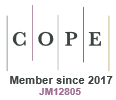Maintenance of developmental competence in feline oocytes following 24 h of meiotic arrest with physiological agents
Shelley E. S. Sandmaier A B * and Jason R. Herrick A C
A B * and Jason R. Herrick A C
A
B Present address:
C Present address:
Abstract
In vitro matured (IVM) feline oocytes exhibit reduced developmental competence compared to in vivo matured oocytes.
Arresting meiosis prior to IVM (pre-IVM) has been shown to improve oocyte quality in other species.
Cumulus-oocyte complexes (COCs) from domestic cats were matured in vitro immediately after collection or following 24 h of pre-IVM. Following IVF, embryonic development was evaluated.
Embryonic cleavage, development to blastocyst, and hatching were not different (P > 0.05) for oocytes subjected to meiotic arrest compared to control oocytes. Gene expression of pluripotency markers and blastocyst cell numbers were also unchanged by the various pre-IVM supplements.
It is possible to maintain feline oocytes in culture for up to 24 h without compromising developmental competence.
Further manipulation of the culture environment during this period of meiotic arrest could be a novel means of improving the quality of feline oocytes.
Keywords: assisted reproductive technology, domestic cat, embryo culture, feline, in vitro fertilization, in vitro maturation, meiotic arrest, pre-maturation.
References
Akin N, Ates G, Von Mengden L, Herta A-C, Meriggioli C, Billooye K, Stocker WA, Ghesquiere B, Harrison CA, Cools W, Klamt F, Massie A, Smitz J, Anckaert E (2023) Effects of lactate, super-GDF9, and low oxygen tension during bi-phasic in vitro maturation on the bioenergetic profiles of mouse cumulus–oocyte complex. Biology of Reproduction 109(4), 432-449.
| Crossref | Google Scholar | PubMed |
Amargant F, Zhou LT, Yuan Ye, Nahar A, Krisher RL, Spate LD, Roberts RM, Prather RS, Rowell EE, Laronda MM, Duncan FE (2023) FGF2, LIF, and IGF1 (FLI) supplementation during human in vitro maturation enhances markers of gamete competence. Human Reproduction 38(10), 1938-1951.
| Crossref | Google Scholar | PubMed |
Gilchrist RB, Ho TM, De Vos M, Sanchez F, Romero S, Ledger WL, Anckaert E, Vuong LN, Smitz J (2024) A fresh start for IVM: capacitating the oocyte for development using pre-IVM. Human Reproduction Update 30(1), 3-25.
| Crossref | Google Scholar | PubMed |
Hammami S, Morató R, Romaguera R, Roura M, Catalá MG, Paramio MT, Mogas T, Izquierdo D (2013) Developmental competence and embryo quality of small oocytes from pre-pubertal goats cultured in IVM medium supplemented with low level of hormones, insulin–transferrin–selenium and ascorbic acid. Reproduction in Domestic Animals 48(2), 339-344.
| Crossref | Google Scholar | PubMed |
Herrick JR (2014) Reversible meiotic arrest in feline oocytes. Reproduction, Fertility and Development 26(2), 258-267.
| Crossref | Google Scholar | PubMed |
Herrick JR (2019a) Assisted reproductive technologies for endangered species conservation: developing sophisticated protocols with limited access to animals with unique reproductive mechanisms. Biology of Reproduction 100(5), 1158-1170.
| Crossref | Google Scholar |
Howard JG, Wildt DE (2009) Approaches and efficacy of artificial insemination in felids and mustelids. Theriogenology 71(1), 130-148.
| Crossref | Google Scholar | PubMed |
Nahar A, Becker J, Pasquariello R, Herrick J, Rogers H, Zhang M, Schoolcraft W, Krisher RL, Yuan Y (2024) FGF2, LIF, and IGF-1 supplementation improves mouse oocyte in vitro maturation via increased glucose metabolism. Biology of Reproduction 110(4), 672-683.
| Crossref | Google Scholar | PubMed |
Rojo JL, Linar M, Young KA, Peluffo MC (2018) Stromal-derived factor 1 directly promotes genes expressed within the ovulatory cascade in feline cumulus oocyte complexes. Journal of Assisted Reproduction and Genetics 35, 785-792.
| Crossref | Google Scholar |
Rojo JL, Jaworski JP, Peluffo MC (2019) Direct role of the C-C motif chemokine receptor 2/monocyte chemoattractant protein 1 system in the feline cumulus oocyte complex. Biology of Reproduction 100(4), 1046-1056.
| Crossref | Google Scholar |
Romero S, Sánchez F, Lolicato F, Van Ranst H, Smitz J (2016) Immature oocytes from unprimed juvenile mice become a valuable source for embryo production when using C-type natriuretic peptide as essential component of culture medium. Biology of Reproduction 95(3), 64.
| Crossref | Google Scholar | PubMed |
Sananmuang T, Techakumphu M, Tharasanit T (2010) The effects of roscovitine on cumulus cell apoptosis and the developmental competence of domestic cat oocytes. Theriogenology 73(2), 199-207.
| Crossref | Google Scholar | PubMed |
Santiquet NW, Greene AF, Becker J, Barfield JP, Schoolcraft WB, Krisher RL (2017) A pre-in vitro maturation medium containing cumulus oocyte complex ligand-receptor signaling molecules maintains meiotic arrest, supports the cumulus oocyte complex and improves oocyte developmental competence. Molecular Human Reproduction 23(9), 594-606.
| Crossref | Google Scholar | PubMed |
Sutton-McDowall ML, Feil D, Robker RL, Thompson JG, Dunning KR (2012) Utilization of endogenous fatty acid stores for energy production in bovine preimplantation embryos. Theriogenology 77(8), 1632-1641.
| Crossref | Google Scholar | PubMed |
Swanson WF (2019) Practical application of laparoscopic oviductal artificial insemination for the propagation of domestic cats and wild felids. Reproduction, Fertility and Development 31(1), 27-39.
| Crossref | Google Scholar |
Wigglesworth K, Lee K-B, O’Brien MJ, Peng J, Matzuk MM, Eppig JJ (2013) Bidirectional communication between oocytes and ovarian follicular somatic cells is required for meiotic arrest of mammalian oocytes. Proceedings of the National Academy of Sciences 110(39), E3723-E3729.
| Crossref | Google Scholar |
Yuan Y, Spate LD, Redel BK, Tian Y, Zhou J, Prather RS, Roberts RM (2017) Quadrupling efficiency in production of genetically modified pigs through improved oocyte maturation. Proceedings of the National Academy of Sciences 114(29), E5796-E5804.
| Crossref | Google Scholar |
Zhong Y, Lin J, Liu X, Hou J, Zhang Y, Zhao X (2016) C-type natriuretic peptide maintains domestic cat oocytes in meiotic arrest. Reproduction, Fertility and Development 28(10), 1553-1559.
| Crossref | Google Scholar |


